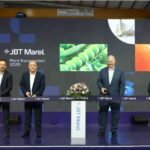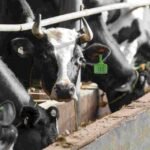The food & nutrition industry must anchor product development and innovation by embracing the top 5 Food & Nutrition Technologies to keep ahead of the competition and succeed in the marketplace, says FutureBridge.
FutureBridge’s Food and Nutrition specialists have identified the top five food & nutrition technologies rooted in the continuous transformation of product demand & supply. These will shape the food and nutrition industry from farm to fork through 2023 and beyond.
“The impending outlook for a possible recession provides an opportunity for innovating based on evolving industry/consumer needs. Converting the developed product to a long-term service during and after recovery offers further potential growth opportunities” – said Rima Mittra, FutureBridge’s Food and Nutrition Industry Principal Consultant. “In 2023 and beyond, the food & nutrition industry must anchor product development and innovation around these top 5 technologies to keep ahead of the competition and succeed in the marketplace.”
Combining its consulting team’s in-depth domain know-how and the data analytics derived from its proprietary industry & technology platforms for deep insights, FutureBridge has identified these as the Top 5 Food & Nutrition Technology Watchlist for 2023 and Beyond:
1. Innovating in recession:
Innovation is vital to open any business growth, and this will be especially true during the current economic volatility. Recession or crisis-related dynamics are accelerators for disruption to explore and create new business models, such as developing a product to service or generating new revenue streams. These innovators will likely see 30% or higher performance improvement during the recovery.
2. Advanced next-gen agriculture initiatives:
Resilient food production demands will drive next-generation agricultural practices such as precision farming technologies, indoor controlled farming, and the Internet of Things (IoT) or AI-coupled technologies. Technology developers will merge farming practices with molecular biology to enable seamless crop production and harvesting.
3. Fusion of cellular agriculture with precision fermentation:
The demand for animal-free and sustainable products continues to grow and will peak in the next 3-5 years. Cellular agriculture is an emerging branch of biotechnology to cultivate animal-free proteins and products – dairy, meat, and seafood — by replicating the biological cell growth process.
4. Enhancing consumer experience for better-for-you products:
Reducing or replacing ingredients to develop better-for-you and clean-label foods and beverages will boost demand for product modulation solutions. These solutions will be critical in ensuring that such products align with the growing consumer consciousness regarding healthy food consumption habits. In the next 3-5 years, taste modulation will emerge as a mainstream segment, overtaking the substitutes or replacers of sugar, salt, fat, and similar ingredients.
5. Enabling tech to drive consumers to track-and-trace nutrition:
Conscious consumers demand real-time tracking and tracing of products to analyze the nutrients, allergens, shelf-life, and more. Companies are providing end-to-end service platforms to create custom diet kits for customers. We expect such propositions to become mainstream in 2023.
About FutureBridge
FutureBridge tracks & advises enterprises on the future of industries from a 1-to-25-year perspective. With its data & analytics platform, in-depth techno-commercial knowledge, and network of start-ups, technology partners, and corporate leaders, it keeps its clients ahead on the technology curve, identifies new opportunities, markets, and business models, and facilitates best-fit solutions and partnerships. FutureBridge has a team of over 500 in-house experts in Europe, North America, and Asia.
Representation Photo designed by macrovector / Freepik
‘Processed Food Industry’: The Voice of Food Processing Industry
Processed Food Industry (PFI) is a premier English-language monthly B2B publication (ISSN 09721649) headquartered in New Delhi, catering to the vibrant and ever-evolving food processing industry. While we don’t claim to be the largest or most widely read, our proud legacy of over 27 years—publishing continuously since 1997—has earned us the trust of industry professionals as a reliable source of insights and information.
If your goal is to tap into the booming Indian and South Asian markets to promote your equipment, technology, software, or consumables, PFI is your strategic partner. With our hybrid approach across print, web, and social media, we help you establish strong brand recognition rooted in market relevance. Backed by a team of top-tier technical writers, we’re ready to work closely with you and your customers to craft compelling content that drives results.
India and South Asia’s food industry is expanding rapidly, driven by efficiency and cutting-edge innovations. Don’t miss the opportunity to elevate your brand and engage with this dynamic market. Get our 2025 media kit to fine-tune your marketing strategy, increase your visibility, and convert potential customers into valuable conversations. Additionally, ask for a sample copy of our monthly magazine and experience the quality and relevance we deliver.
Let us help you define your role in the future of the food processing industry.
Have a news or topic to share with industry? Write to us editorial@pfionline.com
















